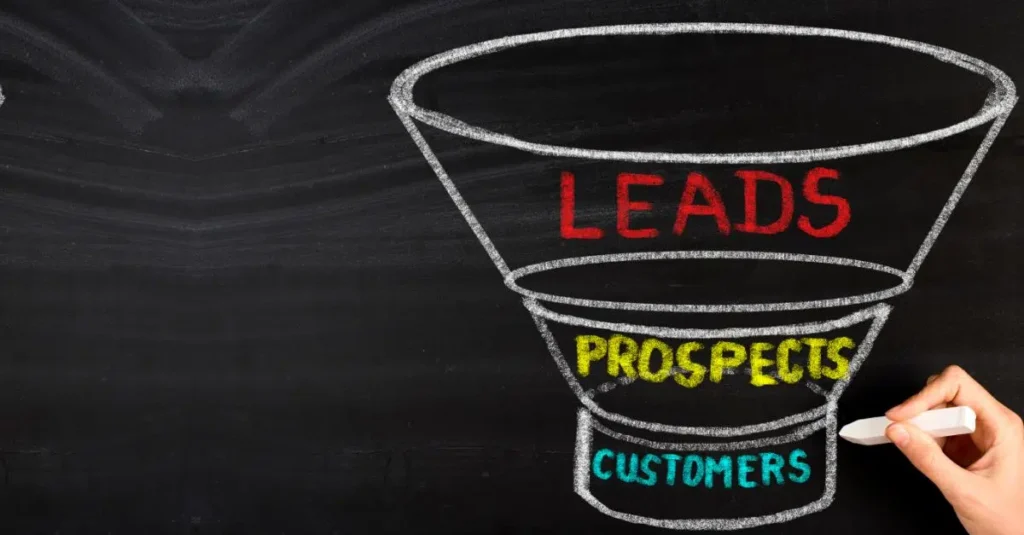Do you feel like your marketing efforts lack direction? Are you doing everything you can but sales aren’t increasing at the rate you want? If so, you might benefit from building an eCommerce funnel. This article will explain how to do it in six simple steps.
What is an eCommerce Funnel?
An eCommerce funnel is a framework that helps marketers deliver to shoppers the information they need before they make a purchase. By visualizing the customer journey as a sales funnel and looking for ways to optimize that journey, you will ultimately increase customer satisfaction and revenue.
Here’s how to do it.
Step 1: Map Out the Buyer’s Journey
Marketers generally talk about the top, middle, and bottom of the funnel. These terms refer roughly to the beginning, middle, and end of the sales cycle. But those descriptions aren’t very informative, so we’ll use HubSpot’s terminology.
HubSpot recommends dividing your eCommerce funnel into three stages of the Buyer’s Journey. They are:
- The Awareness Stage. At this stage, the shopper first becomes aware that they have a problem. Their class reunion is coming up and they want to look good. They’re having a cookout and they want to make sure everyone has fun. A relative is coming into town and they need somewhere to sleep.
- The Consideration Stage. Next, they begin considering their options. For example, the person having a cookout might consider backyard games or a firepit. The person who needs a place for their relative to sleep might look at futons and air mattresses.
- The Decision Stage. Now, they’ve decided which option to take, and they need to find the right product. The person with the cookout has decided to get a firepit and needs to find the right one.
Figure out what the Buyer’s Journey looks like for your customers. Map it out and use that map for the next step.
Step 2: Develop Valuable Content
Once you’ve mapped out the Buyer’s Journey. Figure out what problems and questions your customers have at each stage. Then, develop content to offer them solutions to those problems and answers to those questions.
Step 3: Segment Your Audience
Your eCommerce sales funnel will be much more effective if you build it out to address your customer’s needs at each stage of the funnel. That means you need to do some audience segmentation.
You’ll want to segment your email list and remarketing audience based on the Buyer’s Journey. The easiest way to decide which group a person belongs to is to look at their website activity. For example, if they’ve been looking at the content you developed for the Awareness stage of the Buyer’s Journey, that’s probably what stage they’re in.
Step 4 (Optional): Develop Your Landing Pages
If you plan to use digital advertising to drive traffic to your eCommerce funnel, it’s best to develop specific landing pages for those campaigns. That way, you can tailor the landing page to the ad copy and audience.
If you want to use the landing pages for email acquisition, you’ll need to offer visitors something in exchange for their email address or use website visitor identification to get their email addresses without having them fill out a form.
If you go the old-fashioned route, you’ll need:
- A form with as few fields as necessary (ideally just first name and email)
- An incentive to fill out the form (e.g., free shipping)
- A Thank You page
- A confirmation email
If you use website visitor identification, you’ll just need to add a line of code to your landing pages and it will match up to 40 percent of your visitors to a name, email address, and mailing address.
Step 5: Fill Your eCommerce Funnel
Once you’ve built a funnel, you’ve got to fill it with traffic. There are many eCommerce marketing strategies you can use to drive traffic to your landing pages, but they don’t all work equally well for every stage of the Buyer’s Journey.
Here are some channels to try:
- Awareness: content marketing, native advertising, display advertising
- Consideration: content marketing, email marketing, remarketing, paid social
- Decision: content marketing, email marketing, remarketing, paid social, paid search
Step 6: Follow up.
Once you’ve got someone in your eCommerce sales funnel, you want to nurture them with follow-up emails and remarketing campaigns. These campaigns should be personalized based on the information you’ve collected about the shopper and their website behavior. You can use these ads and emails to drive people deeper into the funnel to increase sales velocity.
Optimize Your eCommerce Funnel
Now you have a structured framework for understanding your marketing efforts. If something isn’t working, you can identify it and make adjustments. Conduct a review on a regular basis to determine where you can increase conversion rates, reduce friction, and remove bottlenecks.
